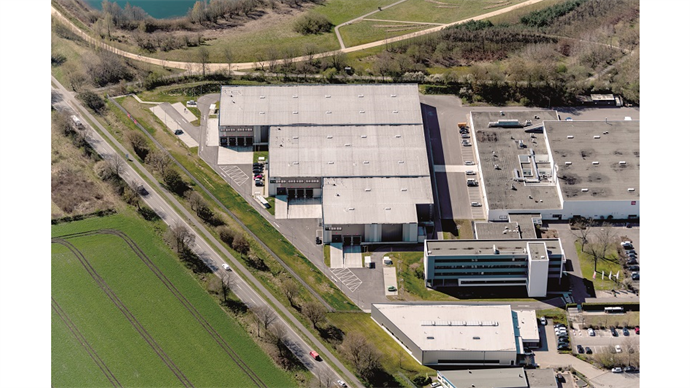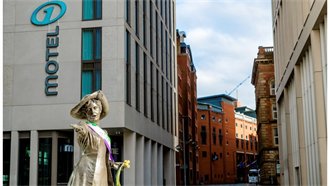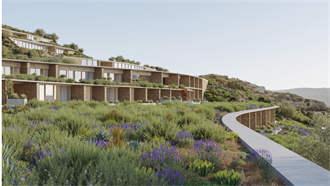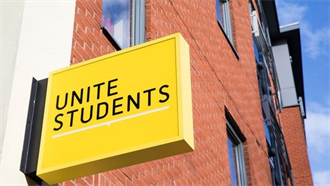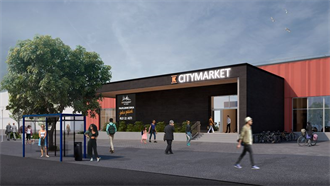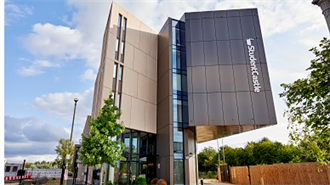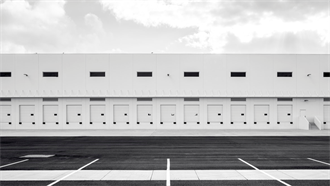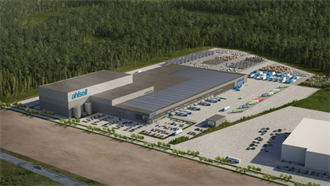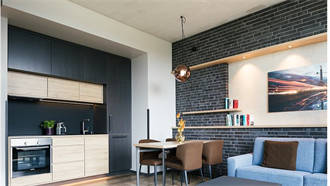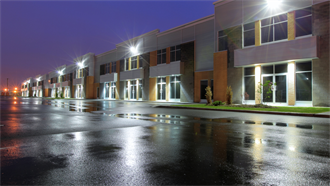GARBE Industrial Real Estate is targeting expansion in Europe, with an approach focusing on product opportunities and the chance for outperformance.
In an interview with Tobias Kassner, head of research at GARBE Industrial Real Estate, Logistics Watch hears how the Hamburg-headquartered firm is pursuing European growth, via a finely-tuned strategy designed to leverage exciting trends in the industrial sector.
LW: For GARBE, 2021 is evolving into a year of geographic expansion. Could you tell us a little about the territorial strategy of GARBE Industrial?
TK: Indeed, a lot has been happening at GARBE in 2021. During the first quarter alone, we opened three branch offices in Paris, Milan and Prague, thereby entering the local markets. And we have more of the same planned for the years ahead. Ultimately, we have our eyes on Europe as a whole: starting with the countries of the Nordic region, to the core markets of the so-called ‘Blue Banana’, and all the way to the markets of southern Europe. In addition to the strong primary corridors, however, we are not leaving out the regions in between and are also examining interesting opportunities here.
Our expansion strategy in Europe is paced by product opportunities and chances for outperformance. This means we will only enter markets with an adequate supply in industrial real estate or else with enough attractive pull to justify proprietary project developments.
Our initial activities when entering a new country concentrate on investment projects, especially in the Core/Core+ segment, before we move on and use our established presence as basis for setting up our own asset management and project development business. This is often accompanied by the formation of a dedicated foreign subsidiary including a branch office. With a presence on the ground, we shift our focus to speculative developments and investments in older property stock for the purpose of upgrading it.
In addition to product availability and demand, our activities are paced by possibilities for outperformance. You need to bear in mind that Europe and its various logistics hot spots follow differing trends. So, we analyse carefully which locations or which combinations of investments in pan-European funds are likely to earn high cash-on-cash returns.
LW: What does the recent hiring of executives in France and Italy signify?
TK: It signifies that we are entering the markets of France and Italy full of energy and motivation. Our latest recruits, these being Lionel Nicolas and Faycal Idelcadi in France, and Giulia Fradegrada in Italy, enable us to get our first developments and investments started at short notice.
What motivated us to pursue this approach? Smart minds, experience and our existing
network. After all, human resources are the key to GARBE’s success. Which is why we are hunting for well-trained staff both in Germany and everywhere else in Europe. We deliberately focus on local networks in this context. Because only if our teams are on location and thoroughly familiar with the country, its people and their customs, can they gain access to plots, investment opportunities and local players.
LW: When you say diversification, do you mean expanding your geographic reach and widening your spectrum of asset types at the same time?
TK: GARBE Industrial Real Estate will continue to live up to its name. The focus remains on industrial real estate. But in addition to pure logistics assets, this may include the occasional light industrial property. Not to forget our subsidiary NDC GARBE, which develops data centres. Our expansion is clearly geared towards geographic breadth.
Reasons for pursuing this approach include our expertise and specialisation in industrial real estate. At the same time, we have no intention to enter into an in-house competition with affiliated companies within the GARBE Group, e. g. GARBE Institutional Capital or GARBE Immobilien Projekte, which are active in other asset classes and, conversely, leave the field of industrial real estate to us.
LW: We noted how quickly GARBE completed several major transactions this year. What is your secret when it comes to identifying opportunities and closing deals ahead of the competition?
TK: The maxim of GARBE is that we want to keep getting better. So, we are always on the lookout for opportunities to optimise our structures. For a number of years now, we have been committed to digitisation and the use of data-driven processes. Which is why we substantially expanded two departments, these being research and digitisation/business intelligence. We massively invested in new technologies and are using them both to find opportunities and to implement development/ investment activities. Doing so has considerably optimised our investment processes, and our investors appreciate this sort of commitment.
Our investment and portfolio management also makes intensive use of the experiences and insights gained by our research and business intelligence units and, above all, of our comprehensive original logistics know-how. This enables us to make quick decisions, to act pragmatically and to avoid needless complication whenever we identify sound investment conditions. But as always, it is safe to say: Real estate is a “people business”. In this context, the strategy of having local teams on the ground works to our advantage. We encourage maintaining a direct and close-knit exchange with business partners and colleagues.
Although this has not always been easy to do during the pandemic, we stuck to our strategy while meeting all protective requirements.
LW: Will you have to refine your strategy in face of the intensifying competition on the market and the growing interest in the logistics industry? Are you worried about the pressure on prices, locations, etc.?
TK: We are first-hand witnesses to the boom in the investment market for logistics real estate, which has been ongoing for several years, and to the accelerating yield compression. It is for this reason that we stepped up investments in our research capabilities and in process optimisation. Based on these, we set up a monitoring system that covers 123 logistics hot spots in 23 countries to date. Depending on the pace of our expansion, we will keep developing this knowledge base. Whenever markets become too pricey, we will very quickly find out and seize the chance to adjust our strategy or asset allocation. Our expansion strategy takes the monitoring results into account.
LW: In what ways is ESG part of GARBE’s identity in general and specifically in your project development business?
TK: In recent years, ESG has evolved into a key component for GARBE. In the case of our new-build properties, we sit down with our tenants to check how this objective can be achieved, and in the case of speculative projects, it is something we check automatically. Together with our general contractors, we actually defined a prototypical property design that meets the ESG criteria. Moreover, we always analyse whether a new-build unit is necessarily the best option or whether the use of a standing property may be preferable.
There is no better way to keep from generating extra carbon emissions through construction than not having to construct at all. It is also worth noting that standing properties tend to be closer to downtown than greenfield developments, and thus generate less traffic. On the fund level, we are successively implementing the GRESB scoring system. As far as possible, our photovoltaics subsidiary, PACE, installs solar modules on all of our warehouses. In addition to the ‘E’ in ‘ESG,’ our property design strategy of ‘responsible by choice’ also takes the ‘S’ and ‘G’ into account. In fact, GARBE has invested in a dedicated department to handle the subject of ESG within the company.

